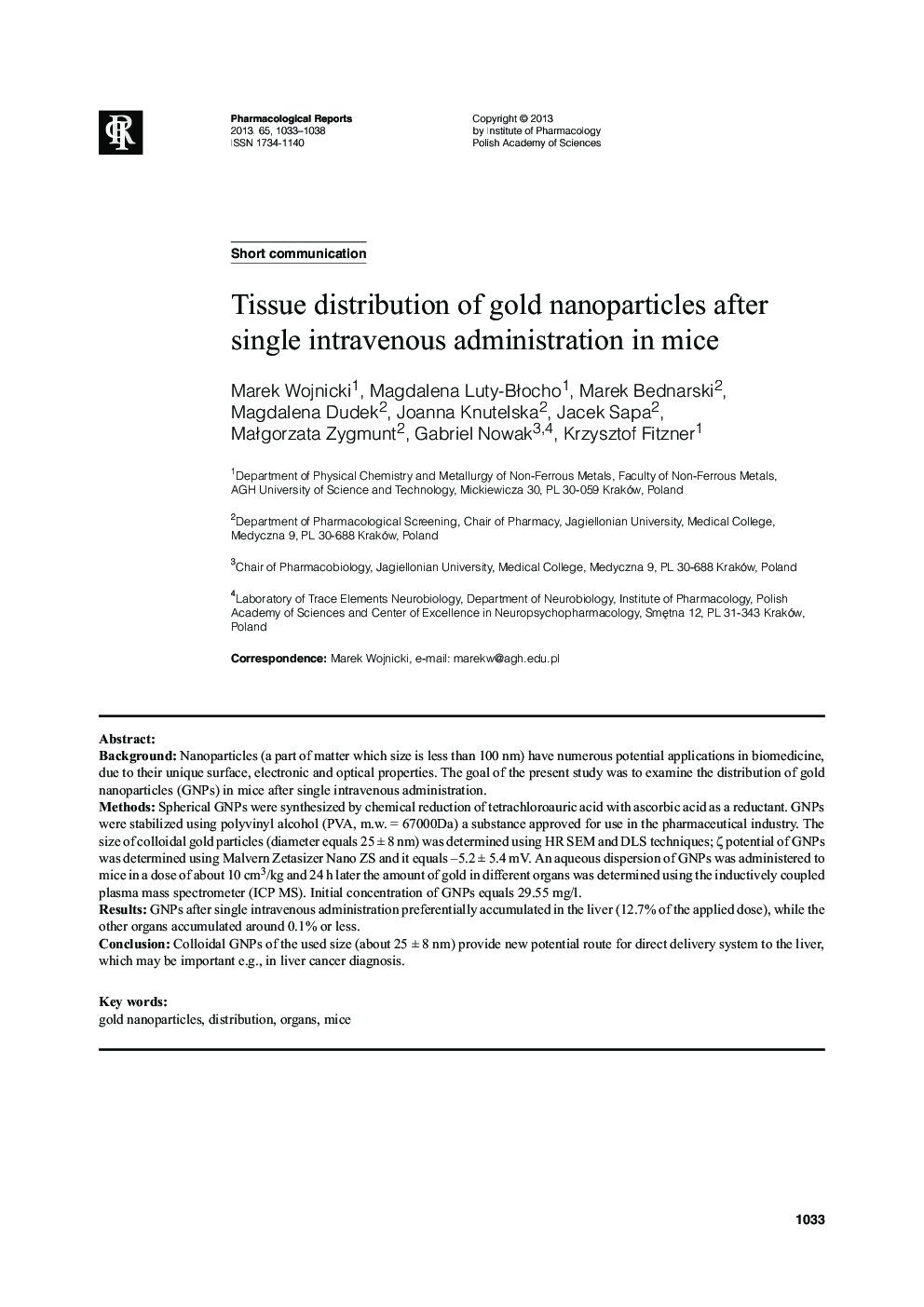| Article ID | Journal | Published Year | Pages | File Type |
|---|---|---|---|---|
| 2011357 | Pharmacological Reports | 2013 | 6 Pages |
:BackgroundNanoparticles (a part of matter which size is less than 100 nm) have numerous potential applications in biomedicine, due to their unique surface, electronic and optical properties. The goal of the present study was to examine the distribution of gold nanoparticles (GNPs) in mice after single intravenous administration.MethodsSpherical GNPs were synthesized by chemical reduction of tetrachloroauric acid with ascorbic acid as a reductant. GNPs were stabilized using polyvinyl alcohol (PVA, m.w. = 67000Da) a substance approved for use in the pharmaceutical industry. The size of colloidal gold particles (diameter equals 25 ± 8 nm) was determined using HR SEM and DLS techniques; ς potential of GNPs was determined using Malvern Zetasizer Nano ZS and it equals –5.2 ± 5.4 mV. An aqueous dispersion of GNPs was administered to mice in a dose of about 10 cm3/kg and 24 h later the amount of gold in different organs was determined using the inductively coupled plasma mass spectrometer (ICP MS). Initial concentration of GNPs equals 29.55 mg/l.ResultsGNPs after single intravenous administration preferentially accumulated in the liver (12.7 % of the applied dose), while the other organs accumulated around 0.1 % or less.ConclusionColloidal GNPs of the used size (about 25 ± 8 nm) provide new potential route for direct delivery system to the liver, which may be important e.g., in liver cancer diagnosis.
